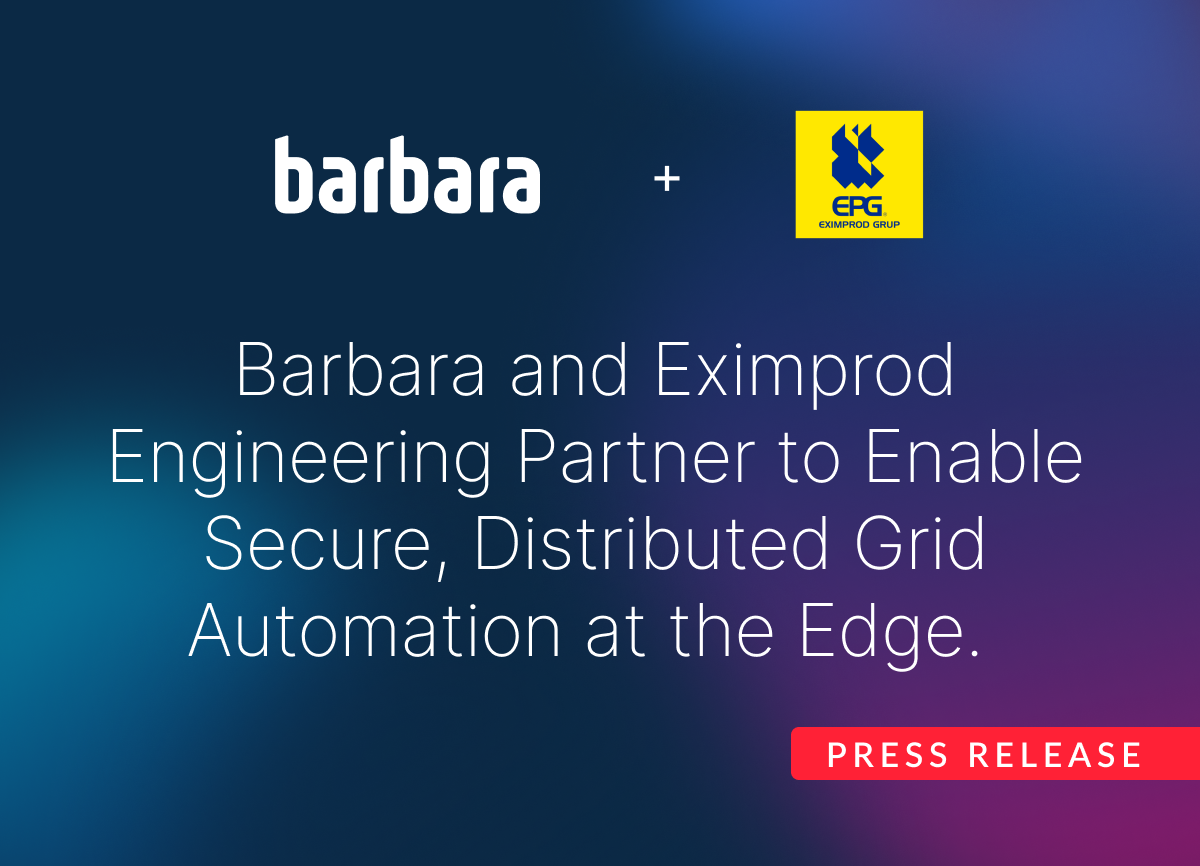Technologies at the Edge: A Survey of Industrial Companies
The purpose of this article is to help the industrial ecosystem (service providers, integrators,, companies...) to better understand the industrial landscape of Edge technology. It is known that by 2026, 30% of packaged enterprise capabilities will be deployed on the Edge with integrated resources (gateways with local compute) to drive inference and business outcomes on nearby data. Find out more on the survey we conducted over 200 industrial companies.
The State of Edge Computing in Industry: Key Findings from a Survey of 200 Industrial Companies
Edge Computing is increasingly present in the industry. This is one of the conclusions drawn from the survey of more than 200 industrial companies, in which we wanted to gather information on the degree of edge implementation and the next technologies to come. Find out more in the following article.
The most relevant conclusions of the study were:
- Nearly 60% of respondents are already undertaking projects related to real-time data processing in 2022.
- Edge Analytics rises as the trend of most interest among industrial companies with 49.3% of the votes, ahead of Artificial Intelligence software for the Edge with 43% and Edge As a Service with 39.4%.
- 70% of respondents plan to grow in investments and projects based on Edge Computing.
- Automation and intelligent asset management is after real-time data processing, the most implemented technology application at the Edge in the Industry with 44.4% of the votes.
- 2 thirds of the respondents already have in their company (internally or through external collaborations) talent capable of carrying out projects based on Edge Computing.
- 37.3% of those surveyed stated that they have predictive maintenance systems already implemented in their company.
From Cloud to Edge: Edge Computing and the Industrial Revolution
The industrial world is immersed in a profound revolution, which is triggering changes ranging from processes to business models themselves. All these changes are based on a common element: data. The emergence of technologies that allow not only capturing but also processing and sending a multitude of data in real time, are enabling use cases that lead companies to their complete digital transformation.
Edge Computing, a technology that brings data intelligence as close as possible to its source, is becoming the digital transformation enabler with the highest impact in the industrial world since the arrival of the cloud. That is why we at Barbara wanted to know more in detail how developed this technology is in the industrial fabric through the following study that we present.
The objective of this article is to help the industrial ecosystem (service providers, customers, sales channels, integrators, etc.) to better understand the industrial landscape with respect to Edge technology.
Advantages of Edge Computing: Edge Computing as a disruptor of innovation in industrial companies
Edge Computing is becoming increasingly relevant in the industrial sector. This is because it presents multiple opportunities to generate new cost optimization scenarios and new revenues, thanks to 3 fundamental advantages:
- Increased scalability
- Increased security and data sovereignty
- Less latency and higher data throughput
It is therefore very interesting to know how involved industrial companies are with this technology and what are the latest innovations in the Edge world.
When it comes to defining the technological applications implemented in their companies, the respondents highlight 3 that are closely related to Edge Computing above the rest: real-time data processing, automation or intelligent asset management and predictive maintenance.
Data analytics and Artificial Intelligence at the Edge, the great aspirations of the Industry.
In the Barometer we prepared in 2021, we pointed out that 54% of industrial companies had already undertaken some Edge Computing project, investing an average of almost 400,000 €. This 2022 the Industry is going further and its main players are already considering what their next investments will be: Edge Analytics; Edge AI Software and Edge as a Service were the most common.
Supervision and operations processes in the industrial sector have traditionally been performed with the help of sensors and SCADAs, but with a strong operator-dependent component. However, the evolution and democratization of artificial intelligence in recent years has made it possible to analyze this data more quickly and massively, including data from the past. With all this, it is possible to reach more accurate results without the errors or inaccuracies derived from our human condition, or even predict future behaviors.

Due to the criticality and volumes of data handled, industrial managers are opting to run these AI algorithms on Edge infrastructures. This way, thousands of sensor and plant data can be processed with real-time responses and without straining the OT network.
The Future of Industry: Key innovations at the Edge to increase industrial agility
Deploying purpose-built applications on the Edge with limited resources that deliver business outcomes and are composable within a broader application will accelerate digital agility by multiple factors.
By 2026, 30% of packaged enterprise capabilities will be deployed on the Edge with integrated resources (gateways with local compute) to drive inference and business outcomes on nearby data, up from less than 5% in 2021.
EDGE AI: An emerging marketplace for enabling AI everywhere
AI at the Edge can create new functionalities from nearby data, and there are many innovations that will be generated around it. All these innovations can be classified into 3 categories:

- Technologies
- Techniques
- Trends
Technologies at the Edge
- Computer vision at the Edge
- IoT Platforms
- Neuromorphic computing
- Edge container management
- AI Edge software
- Blockchain for IoT
Techniques at the Edge
- Summary data
- Edge Applications
- Model compression
- Advanced swarm intelligence
- Orbital Edge
- TinyML
- Federated learning
AI Edge Trends
- Product servitization
- IT/OT integration
- Edge-In to Cloud
Download our latest whitepaper on TRENDS ON INDUSTRIAL EDGE. AI Edge Technologies and the techniques used at the Edge that are available and already being tested in production for various use cases.




.png)





